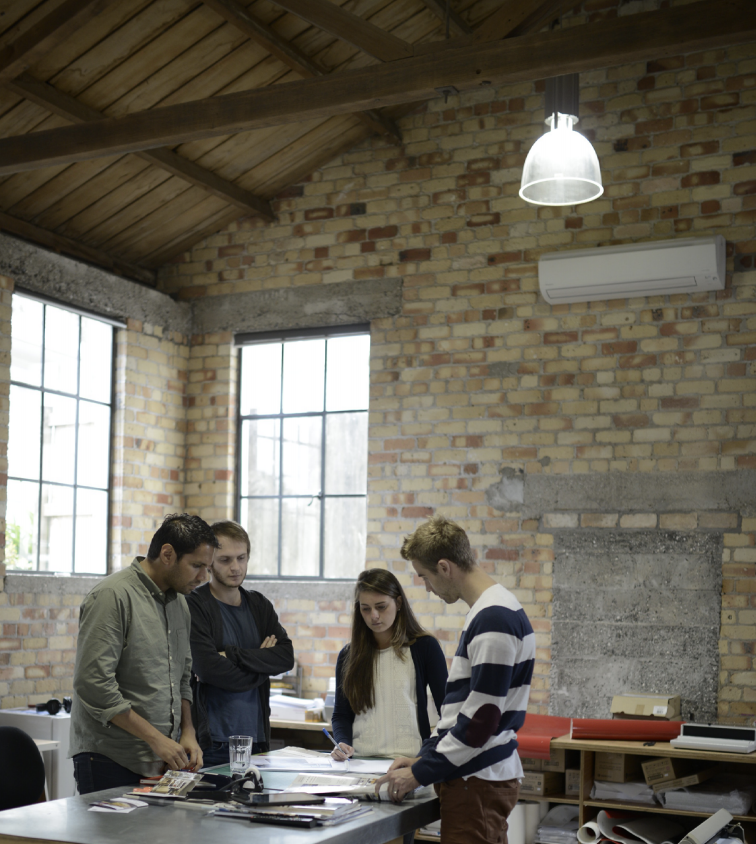
Unlimited Potential or UP Realestate is an Auckland based bespoke realestate agency with a business history of over 20 years. UP has a sizeable marketshare in some of Auckland’s most premium suburbs of Remuera, Mission Bay & Mt Eden. UP’s had an average sale price of 2.1 million in 2015.
Opportunity
A lot had changed in the industry since 2005 (when the brand had been last revised)—new customer demographics, needs, mental models and above all buying capacities. The directors were design-savvy and understood the need for the brand to be able to speak the language of 2015.
Process
I consumed every B2C communication material available to me and understood the design journey the brand had been through since its inception.
This helped me analyse the design changes made to the individual elements and the consistency previously maintained.
A challenge was set create a Proof of Concept of system & workflow that would allow both a level of autonomy but also consistency for the brand.
I assembled and lead a small team consisting of designers, developers and members of our creative partner, Richard Partners.
In a focus group with internal stakeholders, high value customers identified by the some members of the sales team members, the team insight into UP’s perception for its customers.
Simple—Transparent—Bespoke
A subsequent meeting with the stakeholders established project goals and timelines.
The directors saw value in the focus groups and customer research I facilitated. Stakeholders had changed from only the directors to involving customers.
The business was now designing with its customers. This marked the beginning of UP’s experience design journey.
Welcome aboard, UP—I said.
Design of open-home
Design of auction process
Design of home staging
Design of campaigns
Design of communication
Design of marketing material
Design of brand
Design of website
User Flows + Wireframes
Once the goals were established, I did a content audit of the current site. Competitor content analysis was done. This helped establish the content required for the new website. User flows were mapped and several iterations of wireframes were produced. Silverstripe delivered a custom CMS that promised ease of use for operations. At the same time I put together a design system for all creative and front end purposes.
Design System
Part of the UP Design System
My biggest source of inspiration quickly became Brad Frost and through his articles I learnt how to break down the task in simple concepts—including atomic design and the analogy of workshop & storefront I set out to research what ‘good’ looked like by exploring the public design systems of major brands such as Shopify, Uber, Facebook and many others.
An incredible source of information turned out to be Adele—a vast repository of publicly available design systems and pattern libraries.
I was also able to find interesting backstories for each system around their inception, the problems they solved and the pitfalls which I began collating into a matrix - with the hope of adopting parts that would work UP.
I love the quote “One size fits all only applies to rain ponchos” and I knew that whatever we adopted would need to be tailored to the UP environment - not only in terms of usage and technology stacks already in place.
Through my research, I came to the conclusion that a design system lives and dies by its level of adoption and maintenance. If a design system is not useful and easy to keep up to date then it will undoubtedly fall by the wayside. Privacy and confidential concerns expressed by stakeholders led to not adopting a public design system instead create limited access tool-kit that served the team’s purpose.
Due to this, I now knew that whatever set of tools were proposed, they had to work end to end for the users involved, with as little friction and bottlenecks as possible.
It is clear that the Design System will be of great value to UP. The potential of bringing a Design System to life is significant—if not crucial. This gave UP a solid foundation to realise its full potential.
When the new website launched in June 2015 results of the experience optimisation were seen immediately with an 8% uplift in conversion, meaning more people were completing the online join journey.
Customer feedback received from NPS questionnaire also highlighted a positive perception of the digital experience. Ongoing Hotjar tests also suggested that the interface entities were optimised and derived great value. Following the website rebuild all of these measures improved. On average the number of weekly views increased by 21%.






